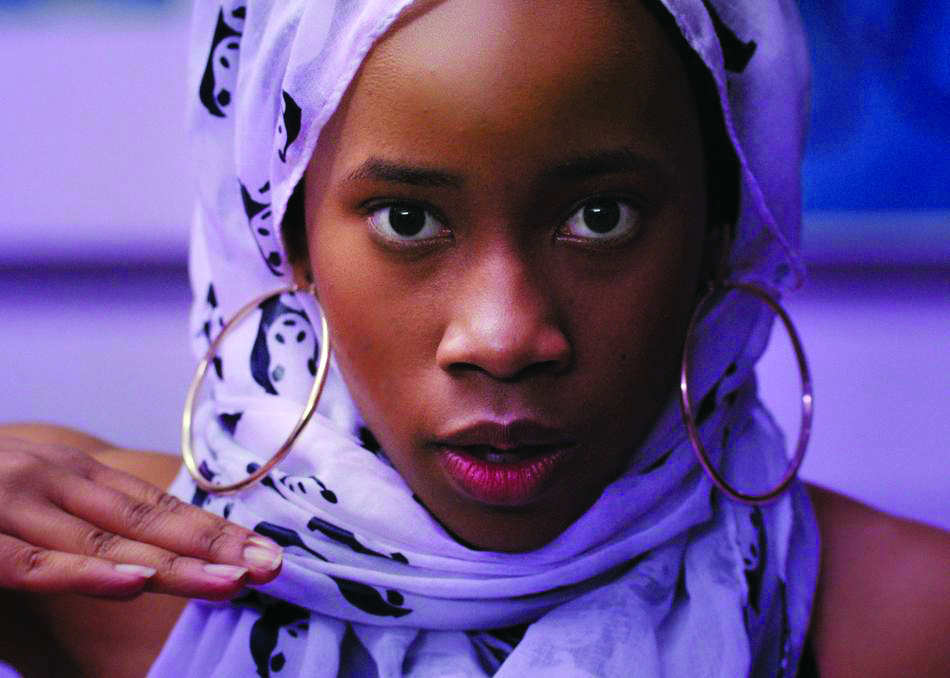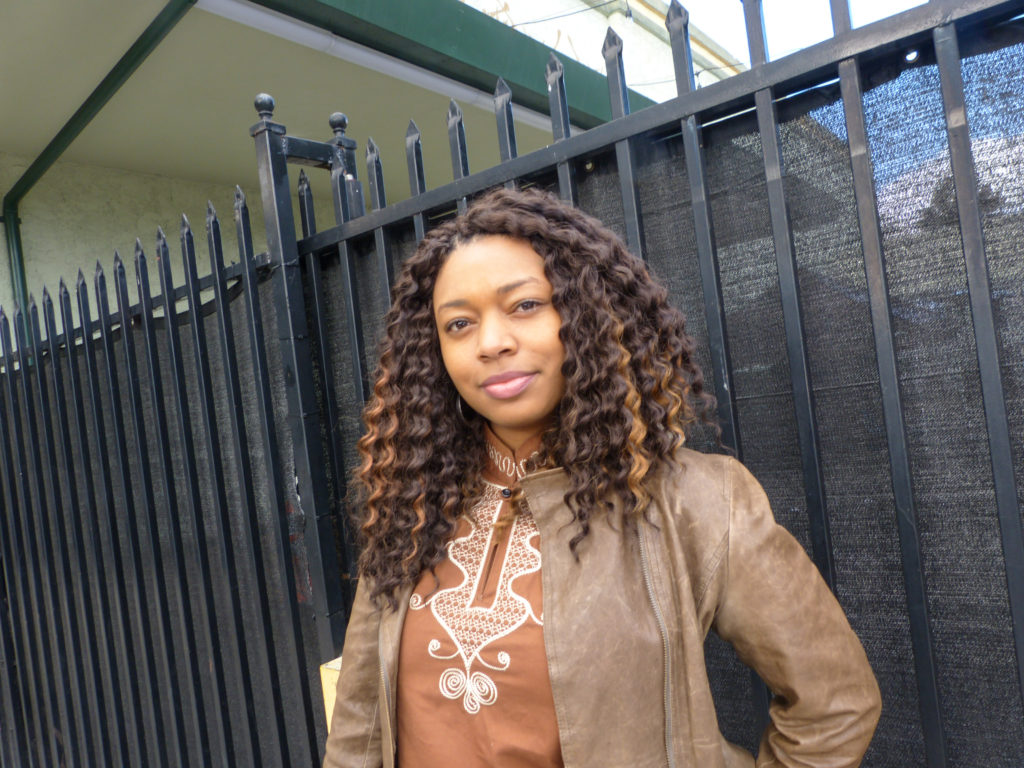
A revolutionary thing occurs in writer/director Nijla Mu’min’s romantic teen drama Jinn. It’s a scene of utmost importance, urgency, and splendor. It’s something we’ve never seen before in mainstream cinema. And when you see what it is, you might be shocked that it’s taken this long to appear, because it’s so simple and elegant, but a statement all the same: A black Muslim girl quietly and happily reading the Quran in a typical American teenager’s bedroom.
American Muslims have had to combat stereotypes of terrorists in movies and television for so long that other issues of their representation often fall by the wayside. As advocates search to commit any positive depiction of Muslims to the screen, even the positive depictions sometimes fail to address gender and ethnic or racial diversity within the Muslim identity. Islam is, after all, the world’s fastest-growing religion. And nearly a third of U.S.-born Muslims are black. The lack of representation of black Muslim women was on Mu’min’s mind as she embarked on her feature debut. Jinn is a story about Summer (Zoe Renee), an African American girl who navigates friendships, romance and a troubled relationship with her mother as she begins to embrace Muslim teachings.
Mu’min’s been doing press tours throughout the film’s festival and theatrical run. (Jinn was released in theaters in November and is available now through VOD.) She says it’s been an overwhelming experience to watch people watch themselves on the screen, possibly for the first time ever. “I’ve seen people in tears, so full of joy and need,” she says, referencing that scene of Summer reading the Quran. “I thought that image alone is really unheard of, just to see a kid peacefully reading Islamic texts.”
Though Jinn is set in the Bay Area, where Mu’min grew up, she shot the majority of the film in Leimert Park, a South L.A. neighborhood that’s home to a vibrant middle-class black community. Much like Oakland, Leimert Park is also being transformed by development — including the forthcoming Metro Crenshaw light rail line, slated to open with a stop in Leimert Park later this year — and gentrification, spurred in part by a wave of white homebuyers. African Americans, who once comprised 84 percent of the population, now account for 70 percent of Leimert Park residents.
Mu’min lived in Leimert Park from 2012 to 2014, when she moved to Los Angeles to study film at CalArts. School was a 40-mile commute, but it was important to her that she live in a neighborhood that most resembled the artistic, intellectual and mixed-economic makeup of Oakland.
When it came time to film Jinn, she felt a deep need to document Leimert as it is now, with happy black people just riding their bikes, taking walks and being themselves in public, together.
“The history of black artists in Leimert Park is so rich, and with my film being about a young black girl who’s going to be a dancer and wants to be an artist, that fits into this community where that legacy already exists,” she says.
But shooting in Leimert Park isn’t the norm for many films, because so many movies featuring African American characters focus specifically on those of a lower socioeconomic class. Mu’min wanted to do something different. “Black characters are often up against poverty or drugs or very harsh circumstances, which is true to a lot of people, but with this story I thought it more important to honor the themes around religion and sexuality and finding yourself,” Mu’min says. “I found that this is such a new thing for writers or critics to see a black story that’s not concerned with those tropes of blackness and struggle.”
Over and over again, she heard the same comparison: Gina Prince-Bythewood’s Love & Basketball (2000). Mu’min loves that people are putting her film in the same class with Prince-Bythewood’s. But it’s also been 18 years since the release of Love & Basketball, which had Mu’min wondering why it’s taken that long for a black artist to be embraced for making a coming-of-age romantic drama.
“Certain black stories can be more palatable to some audiences when they have that edge of hardship in them,” Mu’min says.
“Someone called my film ‘cute’ and that irked me.”

Mu’min’s assessments in that regard aren’t wrong. One only has to look to the black cinema of 1991, which saw the premieres of both Julie Dash’s feminine utopic fantasy Daughters of the Dust alongside John Singleton’s class- and male-focused Boyz n the Hood.
Though Dash’s film is enjoying its own renaissance today, it still lost out in awards, distribution and popular culture to what Mu’min calls “edge of hardship,” which earned Singleton an Oscar nomination. And when dealing with Muslim African American characters specifically, film tends to be more on the muscular side, too — think Spike Lee’s Malcolm X and Michael Mann’s Ali.
Just because Mu’min’s film features a lighter storyline doesn’t mean it’s devoid of drama or tension, or that she paints Islam with some kind of rainbow brush. She also lightly interrogates her own community.
“When you’re black and Muslim and maybe an immigrant, you don’t want to liken yourself to any of the negative stereotypes. There’s already enough you have to go through,” Mu’min says. “But as a lot of Muslims know, not everyone is perfect.” She was intentional about complicating her characters, not making them limp, dull projections of perfection but rather whole humans who at times err and correct themselves. It worried her at first how black Muslims would see those characters, like the lightly misogynist imam who everyone rolls their eyes at until the community has to come together to set him on a better course.
To her surprise, she watched audience after audience laugh at those moments and imperfect characters, perhaps locating a few of their own flaws on screen and finally being able to let out a sigh of relief. That’s only steeled Mu’min’s resolve to commit the communities she knows so well to film.
“It’s our role as artists,” she says. “We have to get away from making safe portrayals.”